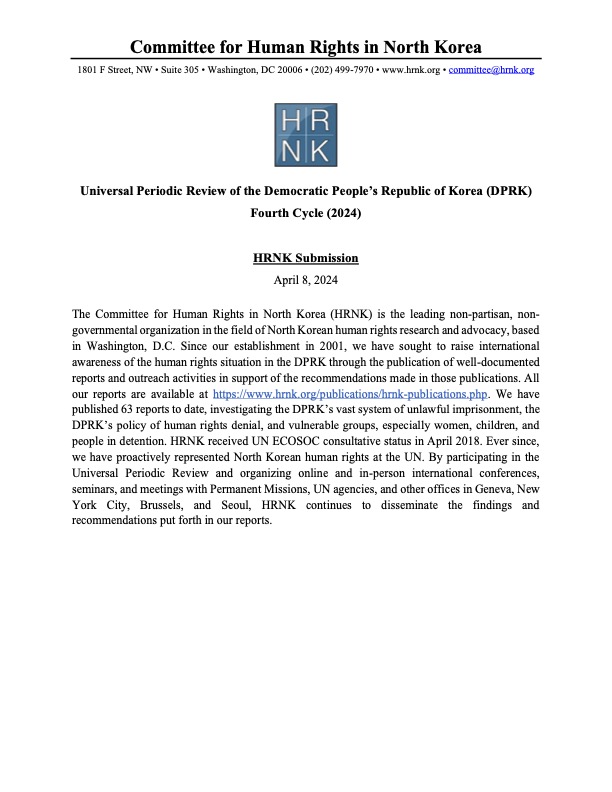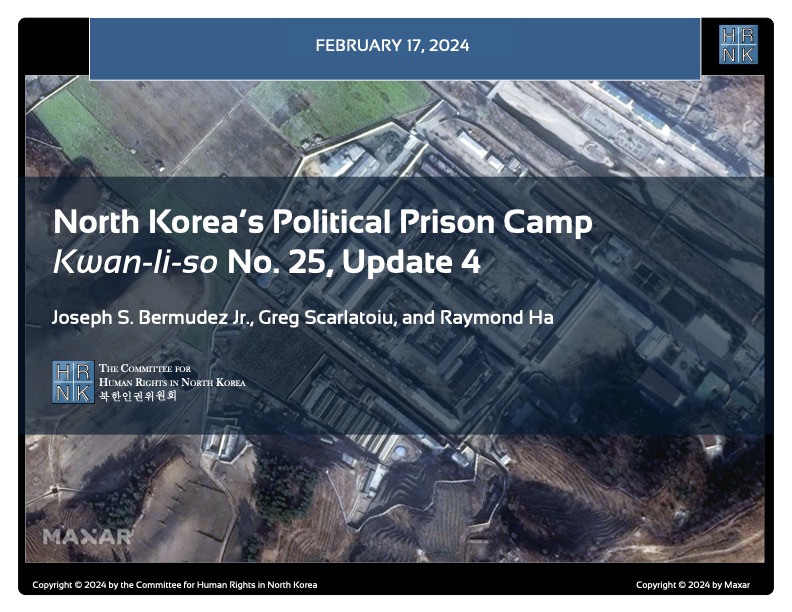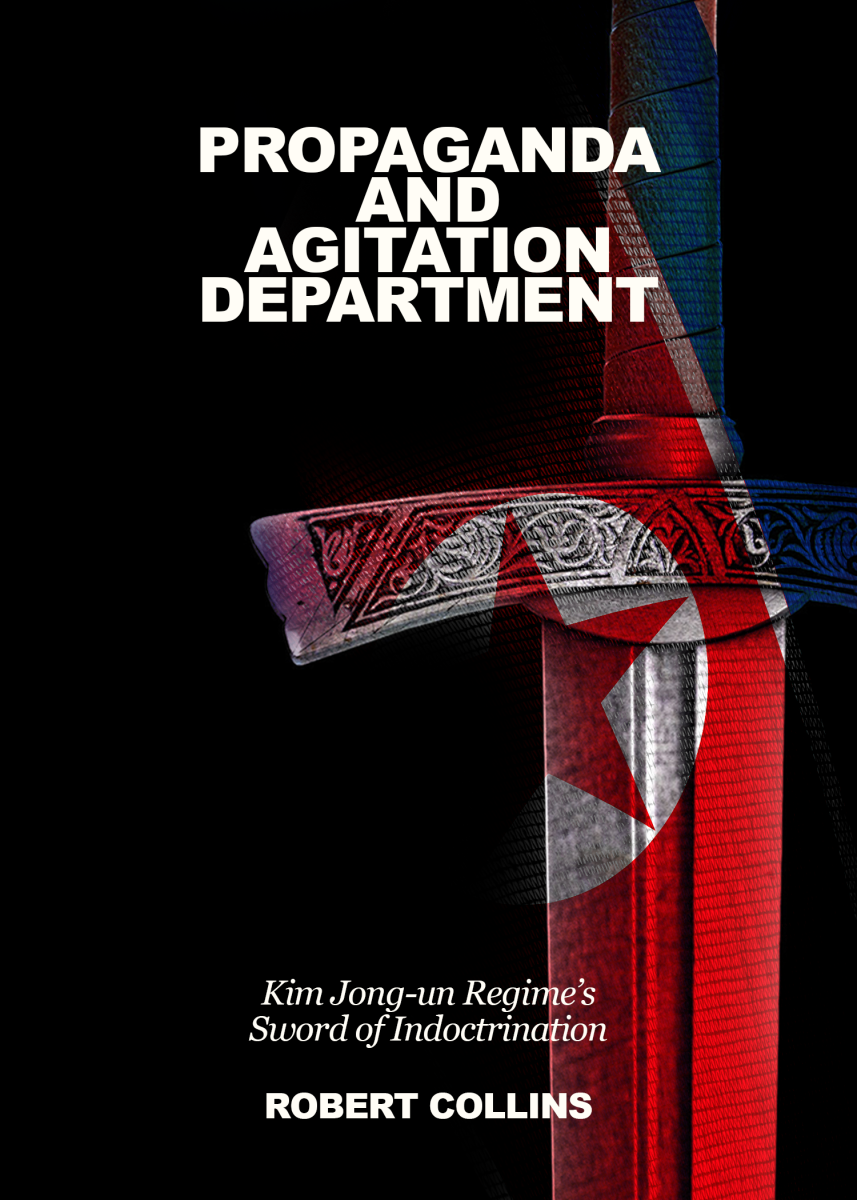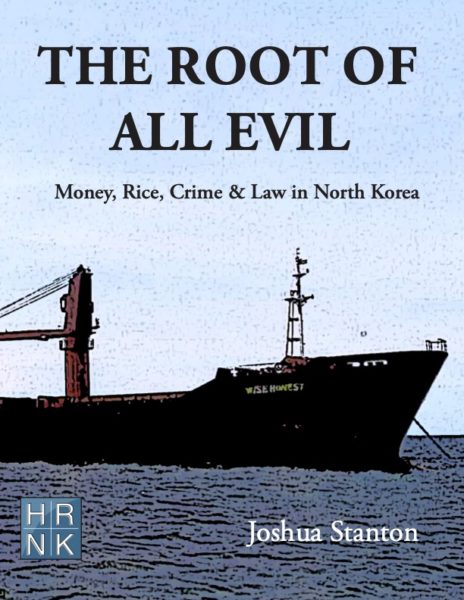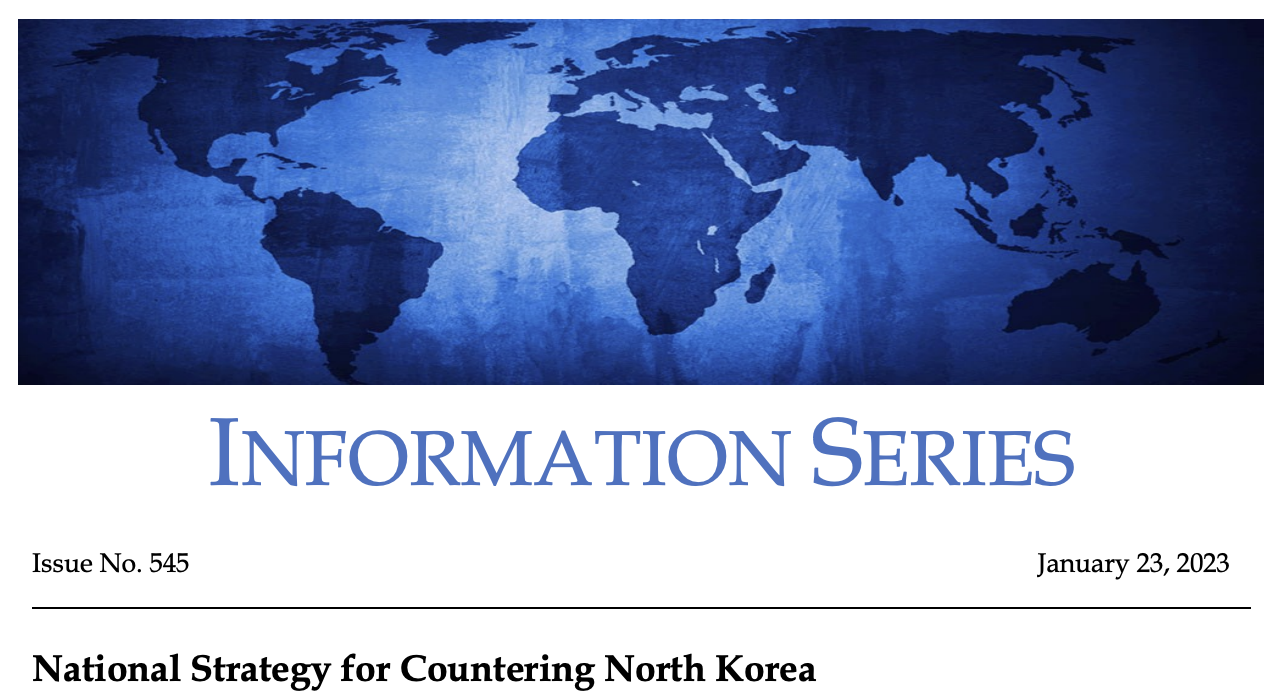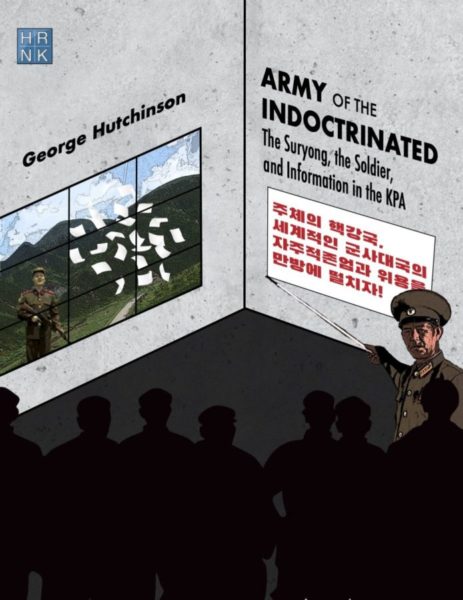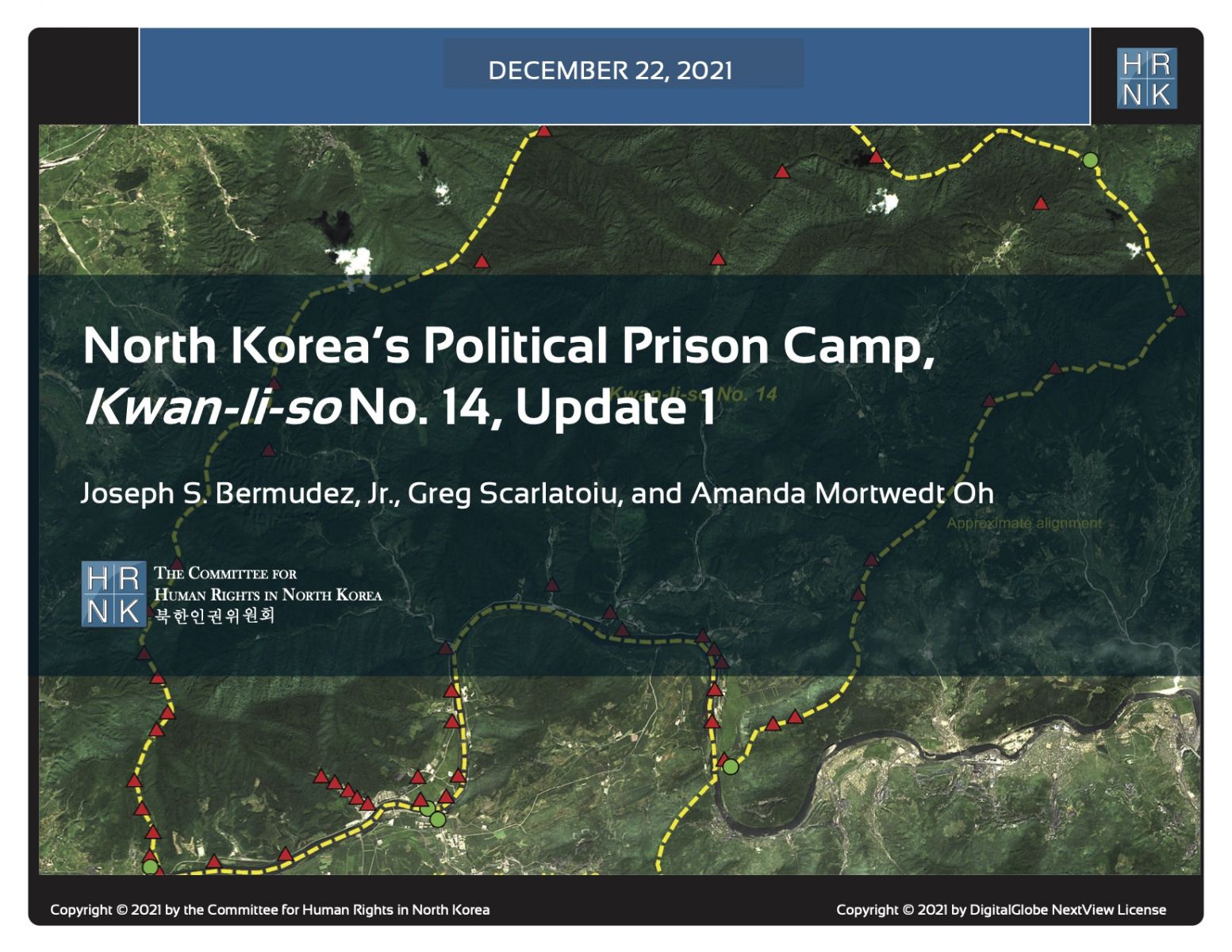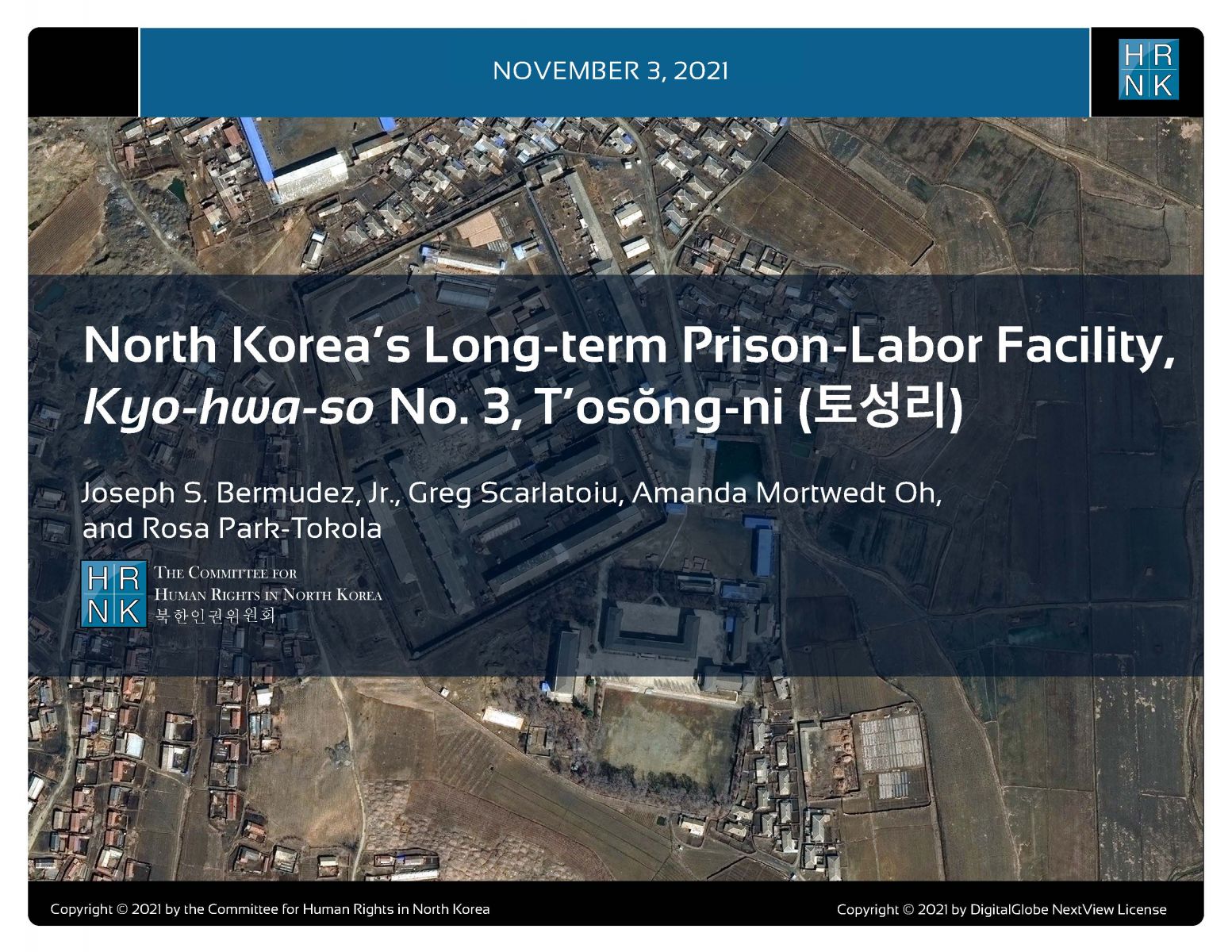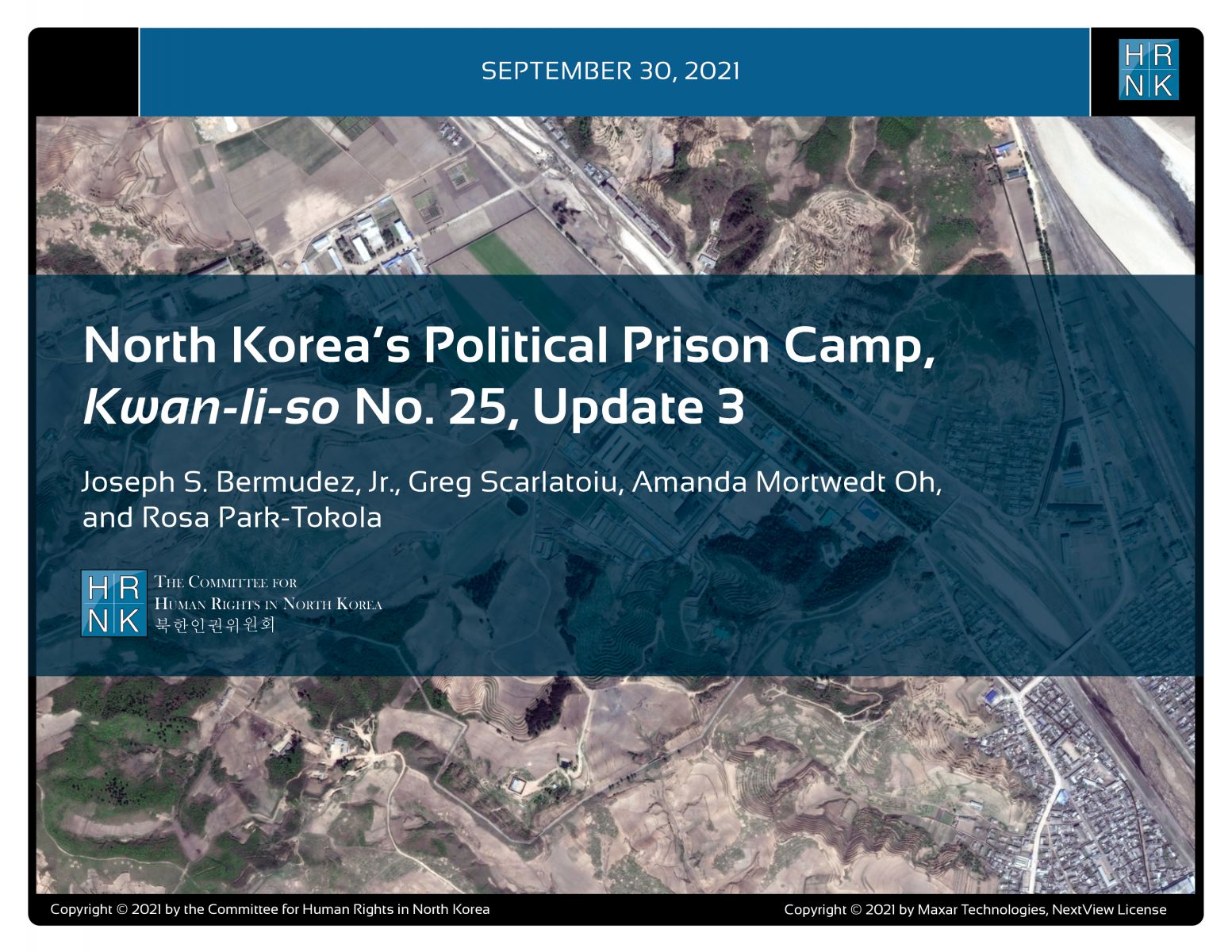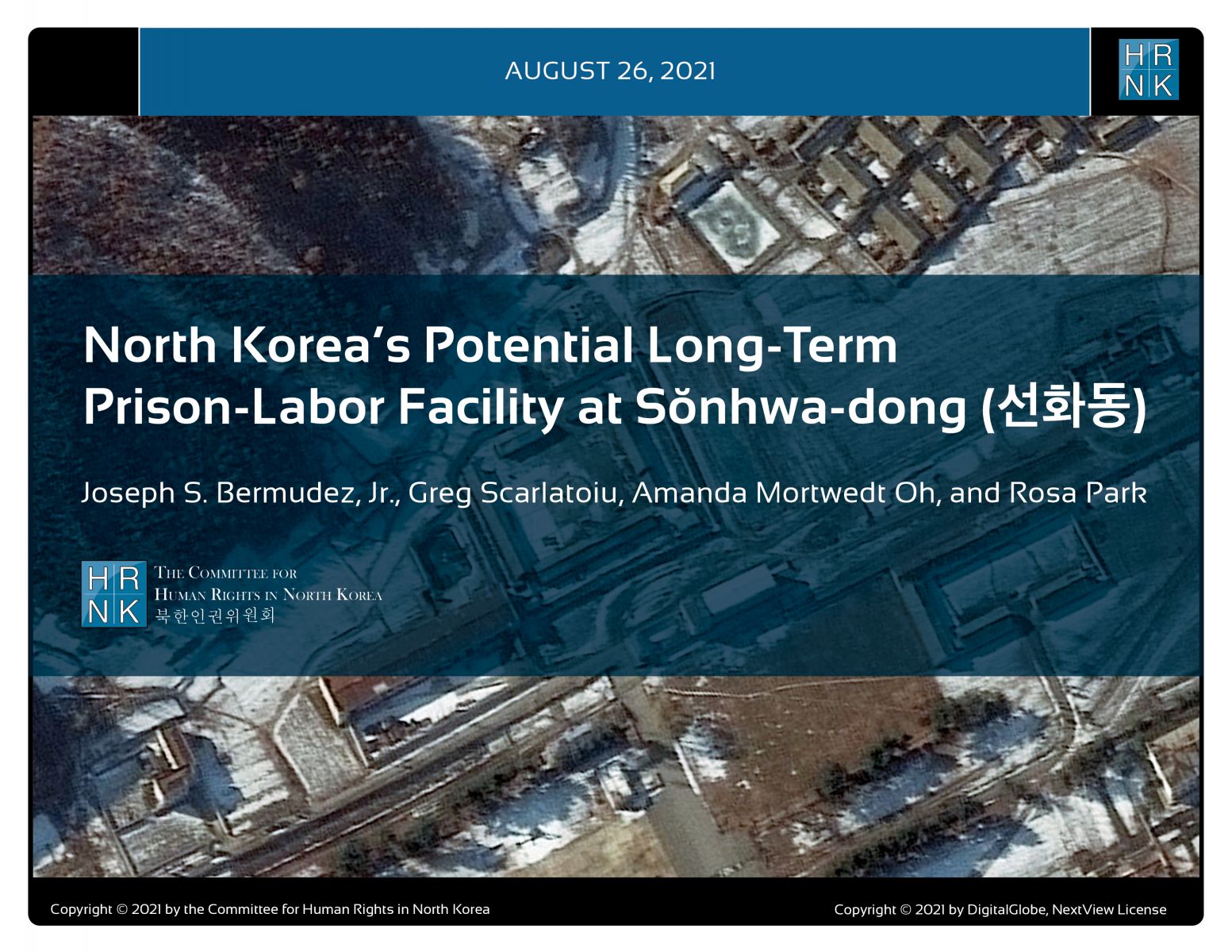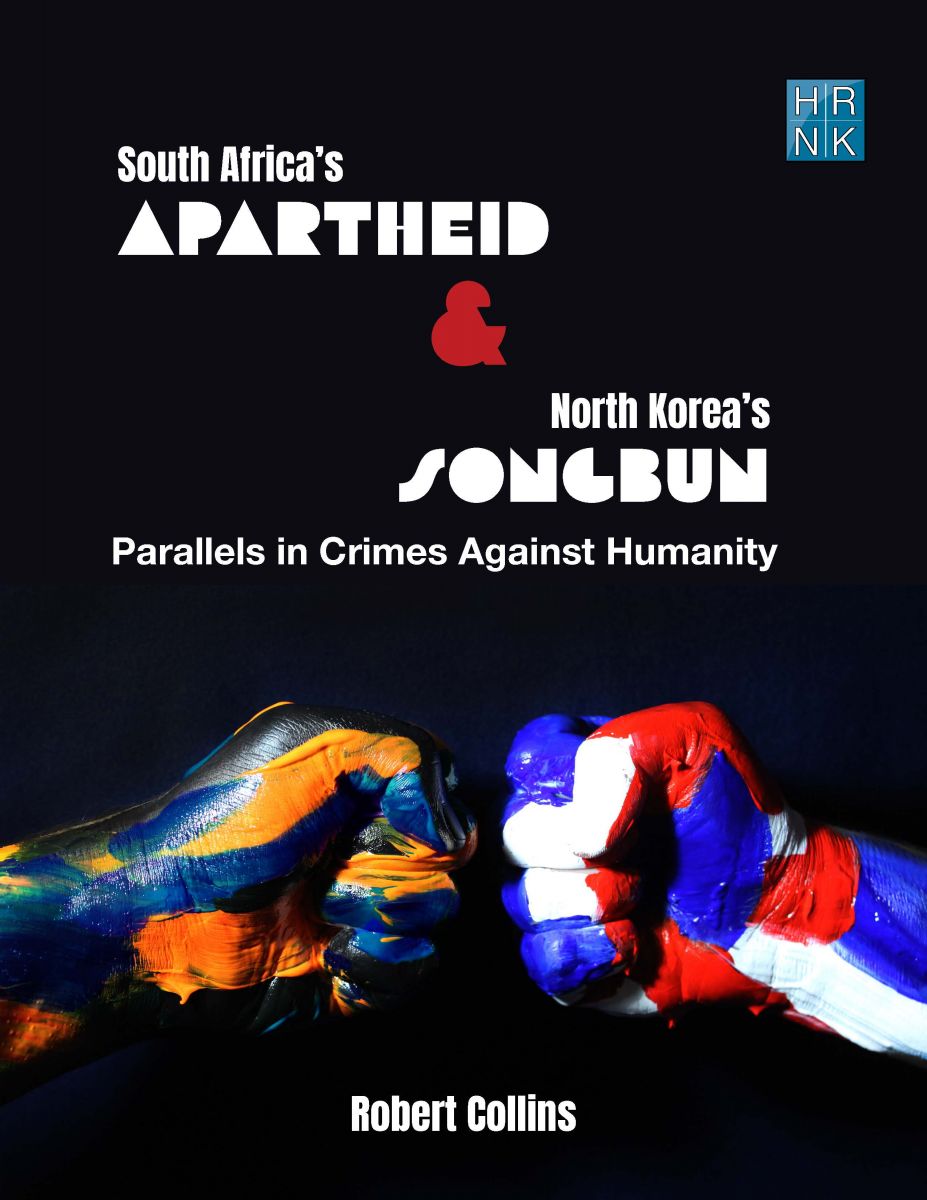PRESS RELEASE
Thursday, June 20, 2019
The Committee for Human Rights in North Korea (HRNK) Launches Report Based on Satellite Imagery of North Korea’s Kyo-hwa-so Labor Camp No. 4 at Kangdong
HRNK and Asia Press combine satellite and ground imagery of the same North Korean detention facility; prison working environment centered on limestone plant, possibly creating severe health hazard for the prisoners
The Committee for Human Rights in North Korea (HRNK), a non-governmental organization based in Washington, D.C., has launched the report North Korea’s Long-term Re-education through Labor Camp (Kyo-hwa-so) No. 4 at Kangdong. The report was authored by senior satellite imagery expert Joseph S. Bermudez, Jr., in collaboration with HRNK’s Greg Scarlatoiu, Amanda Mortwedt Oh, and Rosa Park, with the assistance of veteran satellite imagery specialists Bobby Holt and Allen Anderson. Osaka-based Asia Press shared ground imagery of this detention facility with HRNK. For the first time in its history, HRNK was able to base its analysis of a detention facility on the combination of satellite and ground imagery of the same structures. According to report author Joseph S. Bermudez, Jr., “if a transitional justice process ever takes place in North Korea, such thorough documentation of detention facilities will be critical.”
The Kangdong Kyo-hwa-so No. 4 is located at Chaek-kol in Kangdong-gun, Pyongyang-si, approximately 15.5 kilometers south-southeast of Kangdong. It is 8.3 kilometers east of the Pokchong-ni Kyo-hwa-so. HRNK examined security perimeters, guard positions, the internal arrangement of the camp, housing and support facilities, an adjacent limestone quarry as well as activity within and in the immediate environs of the facility.
Author Joseph S. Bermudez, Jr. confirmed that “the camp was established prior to August 23, 1965, according to declassified satellite imagery from the 1960s.” In addition, “the size of the excavated area in the limestone quarry more than doubled in size from 1965 to 2004, a clear indication of continued use.” During the same period, prisoner housing expanded by about 902 square meters (1,078 square yards), indicating an increase in the prison population, output, or both. Bermudez pointed out that imagery from October 16, 2014 confirmed the construction of a 43 meter by 43 meter inner compound encircling a single building within it. This may be indication of a small expansion of the prison to house a separate class of prisoners, different from the main prison population.
Economic activity at this detention facility is focused on limestone processing. The main prison can be functionally separated into three sections: a limestone plant; plant support and plant administration; and prisoner housing. The presence of a rotary kiln indicates that the plant is capable of crushing and grinding limestone into limestone powder. HRNK Executive Director Scarlatoiu said, “industrial safety and health standards are hardly observed outside prison camps in North Korea. The utter absence of proper safety measures at North Korea’s labor camps has been documented through extensive escapee testimony. This could mean that the inhalation of powdered limestone at Kangdong Kyo-hwa-so will lead to significant respiratory problems among the prisoners.”
The report is the latest step in HRNK’s efforts to create a clear picture of the evolution and current state of North Korea’s political prison camps. HRNK is the NGO that put North Korea’s penal labor colonies on the map by publishing Hidden Gulag in 2003.
The report North Korea’s Long-term Re-education through Labor Camp (Kyo-hwa-so) No. 4 at Kangdong is available on HRNK’s website:
https://www.hrnk.org/uploads/pdfs/Bermudez_Kangdong_FINALFINAL.pdf
Contact: Greg Scarlatoiu, executive director
[email protected]; 202-499-7973
In this submission, HRNK focuses its attention on the following issues in the DPRK:
- The status of the system of detention facilities, where a multitude of human rights violations are ongoing.
- The post-COVID human security and human rights status of North Korean women, with particular attention to sexual and gender-based violence (SGBV).
- The issue of Japanese abductees and South Korean prisoners of war (POWs), abductees, and unjust detainees.
This report provides an abbreviated update to our previous reports on a long-term political prison commonly identified by former prisoners and researchers as Kwan-li-so No. 25 by providing details of activity observed during 2021–2023.
This report was originally published on Tearline at https://www.tearline.mil/public_page/prison-camp-25.
This report explains how the Kim regime organizes and implements its policy of human rights denial using the Propaganda and Agitation Department (PAD) to preserve and strengthen its monolithic system of control. The report also provides detailed background on the history of the PAD, as well as a human terrain map that details present and past PAD leadership.
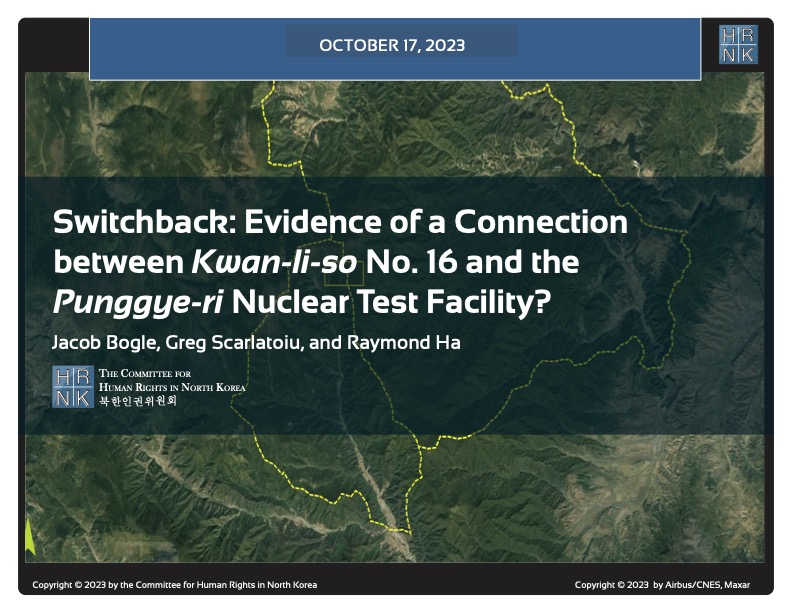
HRNK's latest satellite imagery report analyzes a 5.2 km-long switchback road, visible in commercial satellite imagery, that runs from Testing Tunnel No. 1 at North Korea's Punggye-ri nuclear test facility to the perimeter of Kwan-li-so (political prison camp) no. 16.
This report proposes a long-term, multilateral legal strategy, using existing United Nations resolutions and conventions, and U.S. statutes that are either codified or proposed in appended model legislation, to find, freeze, forfeit, and deposit the proceeds of the North Korean government's kleptocracy into international escrow. These funds would be available for limited, case-by-case disbursements to provide food and medical care for poor North Koreans, and--contingent upon Pyongyang's progress
For thirty years, U.S. North Korea policy have sacrificed human rights for the sake of addressing nuclear weapons. Both the North Korean nuclear and missile programs have thrived. Sidelining human rights to appease the North Korean regime is not the answer, but a fundamental flaw in U.S. policy.
(Published by the National Institute for Public Policy)
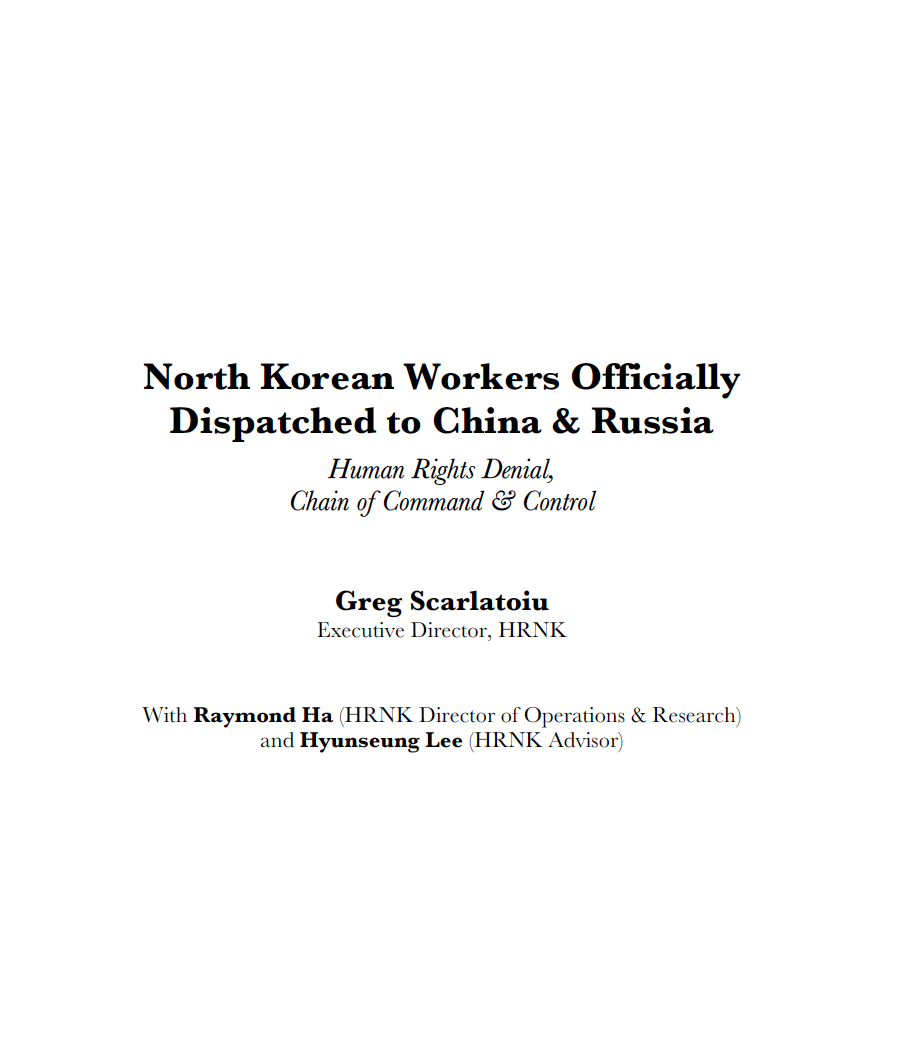
North Korea’s forced labor enterprise and its state sponsorship of human trafficking certainly continued until the onset of the COVID pandemic. HRNK has endeavored to determine if North Korean entities responsible for exporting workers to China and Russia continued their activities under COVID as well.
George Hutchinson's The Suryong, the Soldier, and Information in the KPA is the second of three building blocks of a multi-year HRNK project to examine North Korea's information environment. Hutchinson's thoroughly researched and sourced report addresses the circulation of information within the Korean People's Army (KPA). Understanding how KPA soldiers receive their information is needed to prepare information campaigns while taking into account all possible contingenc
This report is part of a comprehensive long-term project undertaken by HRNK to use satellite imagery and former prisoner interviews to shed light on human suffering in North Korea by monitoring activity at political prison facilities throughout the nation. This is the second HRNK satellite imagery report detailing activity observed during 2015 to 2021 at a prison facility commonly identified by former prisoners and researchers as “Kwan-li-so No. 14 Kaech’ŏn” (39.646810, 126.117058) and
This report is part of a comprehensive long-term project undertaken by HRNK to use satellite imagery and former prisoner interviews to shed light on human suffering in North Korea by monitoring activity at civil and political prison facilities throughout the nation. This study details activity observed during 1968–1977 and 2002–2021 at a prison facility commonly identified by former prisoners and researchers as "Kyo-hwa-so No. 3, T'osŏng-ni" and endeavors to e
This report is part of a comprehensive long-term project undertaken by HRNK to use satellite imagery and former detainee interviews to shed light on human suffering in the Democratic People’s Republic of Korea (DPRK, more commonly known as North Korea) by monitoring activity at political prison facilities throughout the nation. This report provides an abbreviated update to our previous reports on a long-term political prison commonly identified by former prisoners and researchers as Kwan-li-so<
Through satellite imagery analysis and witness testimony, HRNK has identified a previously unknown potential kyo-hwa-so long-term prison-labor facility at Sŏnhwa-dong (선화동) P’ihyŏn-gun, P’yŏngan-bukto, North Korea. While this facility appears to be operational and well maintained, further imagery analysis and witness testimony collection will be necessary in order to irrefutably confirm that Sŏnhwa-dong is a kyo-hwa-so.
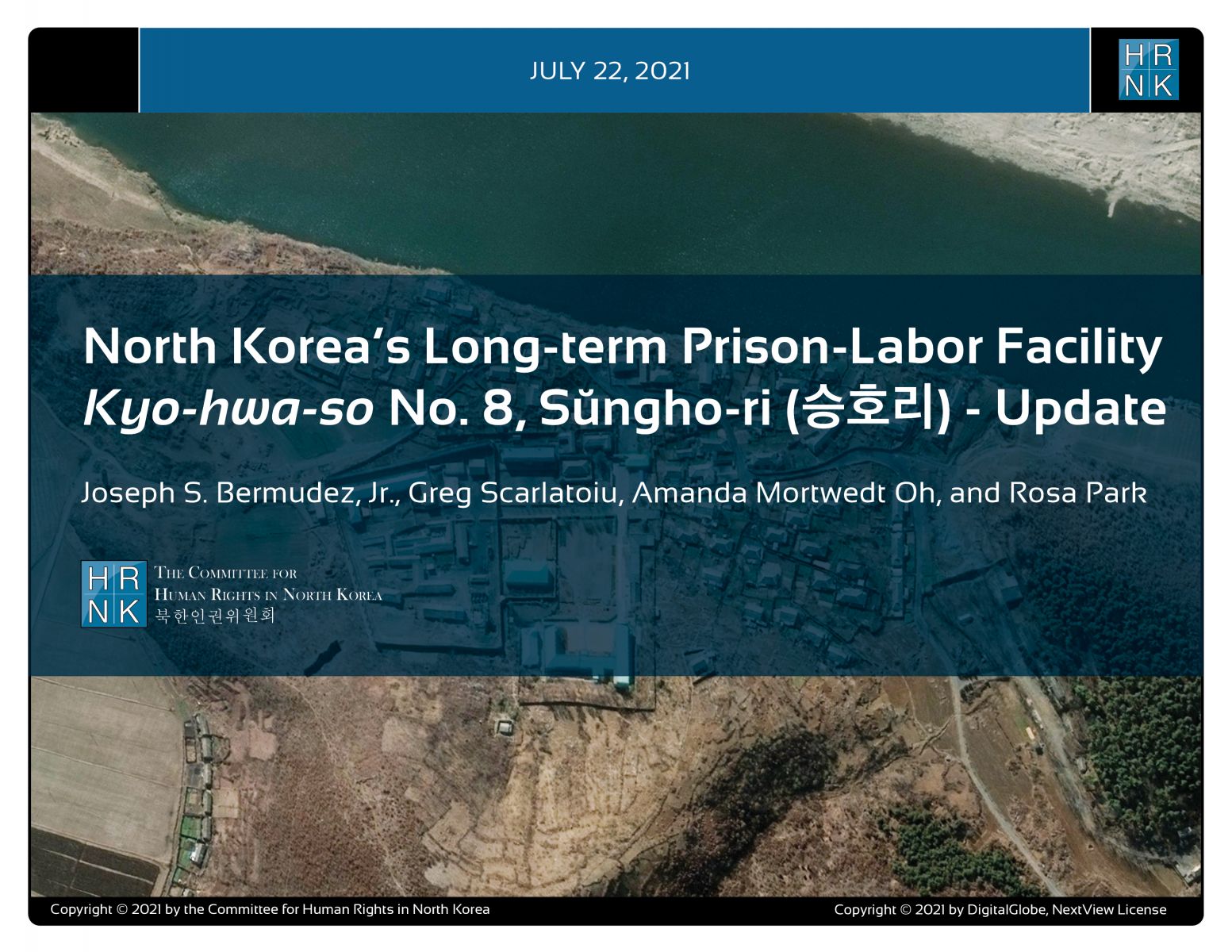
"North Korea’s Long-term Prison-Labor Facility Kyo-hwa-so No. 8, Sŭngho-ri (승호리) - Update" is the latest report under a long-term project employing satellite imagery analysis and former political prisoner testimony to shed light on human suffering in North Korea's prison camps.
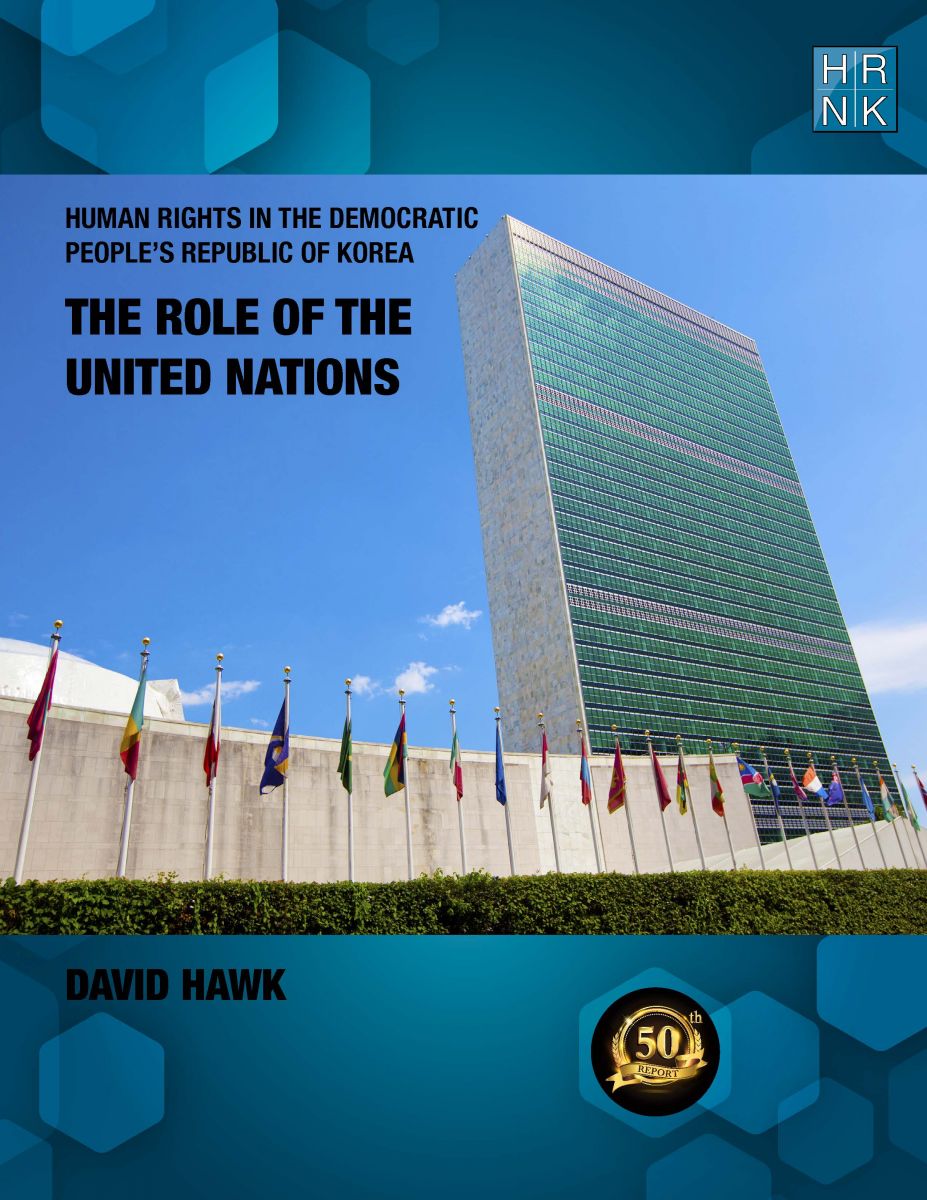
Human Rights in the Democratic Republic of Korea: The Role of the United Nations" is HRNK's 50th report in our 20-year history. This is even more meaningful as David Hawk's "Hidden Gulag" (2003) was the first report published by HRNK. In his latest report, Hawk details efforts by many UN member states and by the UN’s committees, projects and procedures to promote and protect human rights in the DPRK. The report highlights North Korea’s shifts in its approach
South Africa’s Apartheid and North Korea’s Songbun: Parallels in Crimes against Humanity by Robert Collins underlines similarities between two systematically, deliberately, and thoroughly discriminatory repressive systems. This project began with expert testimony Collins submitted as part of a joint investigation and documentation project scrutinizing human rights violations committed at North Korea’s short-term detention facilities, conducted by the Committee for Human Rights
